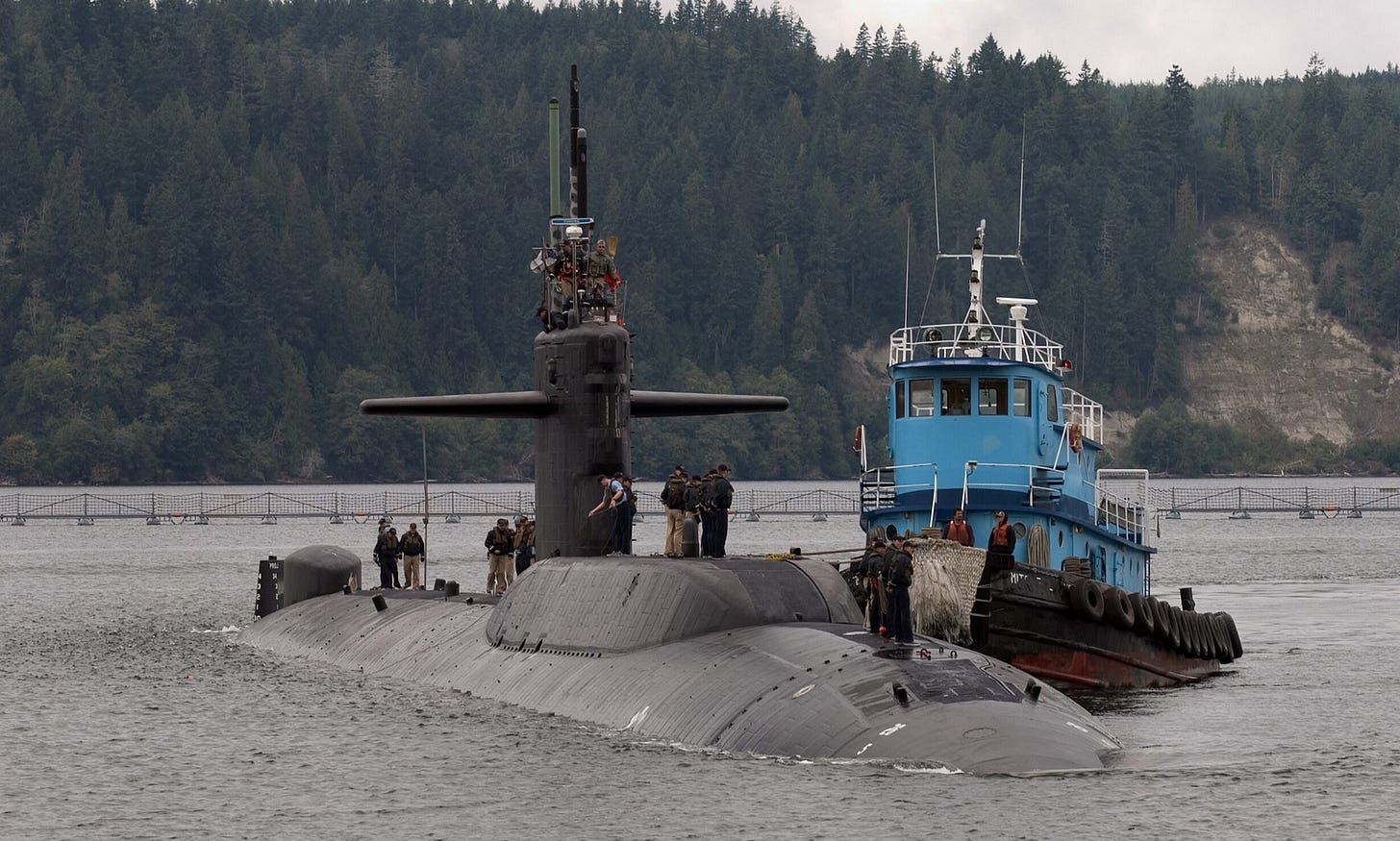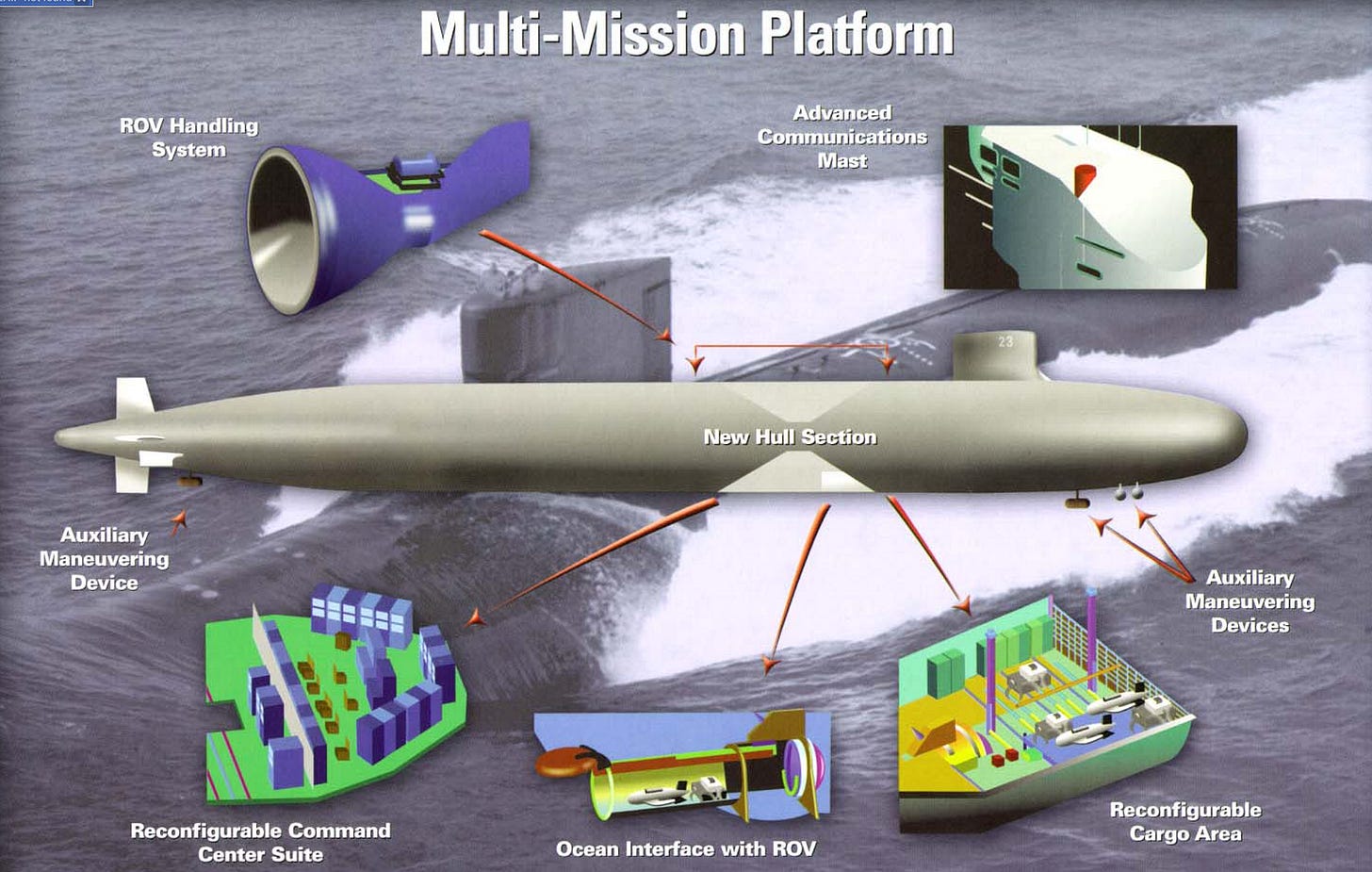Silent Wars: USS Parche (SSN-683)
It’s fair to say that while submarines were a key part of WW2, they really didn’t reach their full utility until the early days of the Cold War. While the diesel engine would go through several iterations to help improve its utility as a sub-surface weapon, it would take the introduction of the nuclear reaction to help make the submarine truly shine.
With nuclear energy now in play, submarines didn’t have to surface for oxygen anymore, and they would now achieve their best efficiency underwater. While this would work great as a hunter, it turns out that being able to make your own air and water works out pretty great for a listener as well. As such, most big players in the Cold War would end up having their own “special” boats that would focus solely on signals and intelligence gathering.
While there were many boats that would be involved in such activities, one boat in particular would stand out for its overall contribution. The US-built, Sturgeon-class submarine USS Parche would achieve her legacy by going into the lion’s den to collect her intelligence.
The Boat
While she wasn’t the first US boat to be designed for intelligence gathering activities, she was one of the most unique. A nuclear-powered vessel, Parche started life as a typical Sturgeon-class boat that would, over the course of its life, be modified to the point of individuality. There were others, but none quite as important and unique as Parche would be.
It was her signals intelligence collection suite that would help make her special. An array of antennas, amplifiers and other SIGINT equipment would be installed on the boat, giving Parche the ability to travel to a location submerged, sit at periscope depth and gather signals intelligence from things like missile tests while remaining submerged.
She also sported other modifications, like a set of specially fitted skids to aid her in sitting on the bottom while remaining undamaged, as well as a special access port that would allow divers to safely enter and exit the hull while she remained on the bottom.
We can see her relevance partly in the length of her service life. While she would be laid down in 1973, a lifetime of modifications and a key role to play in the intelligence world meant that her mission would continue through and beyond the Cold War. In fact, it would be 2004 as the war on terror ramped up before Parche would eventually be removed from service and by the time this occurred, she would acquire 9 presidential citations over the course of her career.
The Exploits
She didn’t just retain relevance in the Cold War era. In 1995 and 1996, as the Third Taiwan Strait crisis grew, it was rumoured that Parche would be involved in collecting Chinese DF-15 missile fragments that would be launched into the sea during the crisis.
However, it would be her exploits in the Sea of Okhotsk that would be particularly noteworthy. Here, as part of Operation Ivy Bells, Parche would spend extended periods of time submerged while gathering intelligence that passed through an important Soviet communications cable.
Using a special magnetic tap, divers would install the device over the cable where it would gather all traffic that passed through the system. When retrieved, the device would eventually be taken back to the United States, where intelligence analysts could properly analyse the data for actionable information.
These patrols weren’t without risk, though. As noted in Blind Man’s Bluff, Parche was once unfortunate enough to be caught in the midst of a nearby Soviet life fire operation, which would lead to some tense moments.
The Ivy Bells intelligence operation would run for over nine years before it was blown by American Ronald Pelton, who was acting as an intelligence asset for the Soviets.
Pelton would eventually pass information on Ivy Bells to the Soviets. Source: Wikipedia.
The Legacy
It’s important to point out that the Americans were by no means the only ones performing these types of operations and at the time, these were some of the most sensitive operations that were conducted by the US navy.
While spy satellites and open-source intelligence would help to change the method of intelligence gathering, it’s fair to say that at the time, space-based methods of gathering SIGINT would be in their infancy and still developing. These methods would become more prevalent as time progressed, leading to the design and implementation of many such systems (or variants of) that are still in use today.
It’s also worth considering that the legacy of such operations would still influence decision-making, even today. It would be so impactful that the United States, the United Kingdom and even Australia would continue to have “special” boats for intelligence purposes. While Parche is now long gone, her legacy lives on in the Seawolf-class submarine USS Jimmy Carter (SSN-23). SSN-23 remains in service as the modern equivalent of Parche and carries out clandestine missions to this day.
USS Jimmy Carter (SSN-23) and the specially designed Multi-Mission platform. Source: Wikipedia.
More Info
If you’re interested in learning more about some of the intelligence-gathering activities that took place during the Cold War, then you’re in luck, as both the British and the Americans have released books that focus on exactly that topic.
Both Hunter Killers (ISBN 1409144186) and Blind Man’s Bluff (ISBN 0–06–103004-X) focus on this exact topic and provide a very interesting perspective on sub-surface life as well as some of the missions that were tackled during the era. They are great reads for those interested in military history, intelligence gathering or submarines in general.
In our next Silent Wars article, we’ll be taking to the air to have a look at airborne signals intelligence and analysis capabilities that exist in platforms like the RC-135.
If you found this article insightful, informative, or entertaining, we kindly encourage you to show your support. Clapping for this article not only lets the author know that their work is appreciated but also helps boost its visibility to others who might benefit from it.
🌟 Enjoyed this article? Join the community! 🌟
📢 Join our OSINT Telegram channel for exclusive updates or
📢 Follow our crypto Telegram for the latest giveaways
🐦 Follow us on Twitter and
🟦 We’re now on Bluesky!
🔗 Articles we think you’ll like:
- What The Tech?! Space Shuttles
- Shodan: A Map of the Internet
✉️ Want more content like this? Sign up for email updates







































